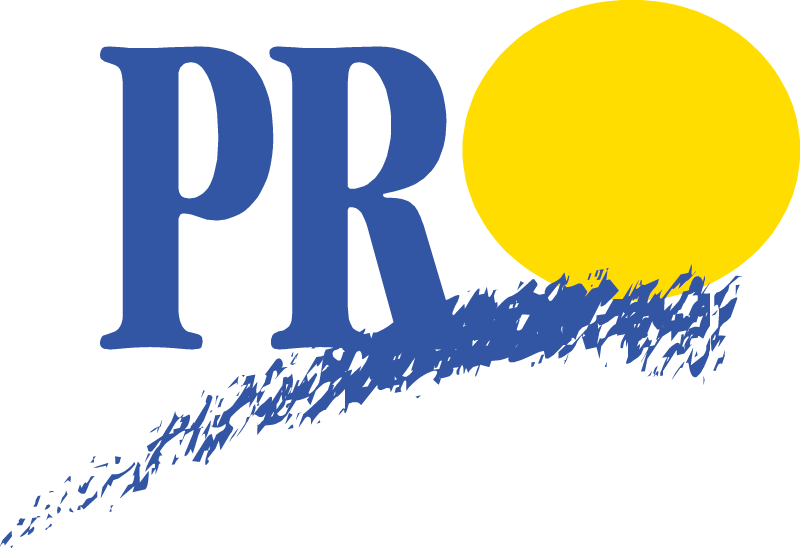
Bill S-228: The Child Health Care Protection Act
Restricting Marketing of Unhealthy Food and Beverages to Children: An Update on Proposed Regulations.
This briefing note was written by the Canadian Parks and Recreation Association (CPRA) with content from Health Canada.
In 2015, the Government of Canada committed to restricting the marketing of unhealthy foods to children. The Minister of Health's 2017 mandate letter reaffirmed this commitment. It states:
"Promote public health by…introducing new restrictions on the commercial marketing of unhealthy food and beverages to children, similar to those now in place in Quebec."
Restricting the advertising of unhealthy food and beverages to children is a key element of Health Canada's Healthy Eating Strategy, which aims to curb the rising burden of obesity and chronic disease by making the healthier choice easier for all Canadians.
Bill S-228: The Child Health Protection Act
In 2016, Senator Greene Raine introduced Bill S-228, the Child Health Protection Act, in Senate. The Bill aims to protect children's health by prohibiting the marketing of unhealthy food and beverages to children.
Bill S-228 was studied by the House of Commons Standing Committee on Health (HESA) from April 18 to 30, 2018. During its study, HESA adopted a government amendment to define "children" as persons under 13 for the purposes of this Act. As well, HESA adopted a second amendment that would require Parliament to review the legislation within 5 years of the Act coming into force, with a particular focus on the definition of "children" to assess whether or not the lower age limit results in increased advertising to teenagers.
Regulations
Presently, Health Canada is developing regulations to implement the proposed prohibition on the advertising of unhealthy food and beverages to children under Bill S-228. There will be a consultative period once draft regulations are prepared (Fall 2018). During this consultative period, any association or individual can provide written comments to Health Canada on the draft regulations. CPRA will inform its PT members when the consultations open and will provide a national written response. CPRA will encourage PT members and their members to also provide a written response that supports the national position or raises unique regional concerns.
Proposed Approach for Regulations
The new regulations will:
- define "unhealthy" food;
- set out factors to determine if an advertisement is directed at children; and,
- set out exemptions to the prohibition, such as for children's sports sponsorship.
Health Canada is building on lessons learned and best practices from the Quebec model - which restricts the marketing of all products and services to children since the late 1970's - to inform the proposed regulatory approach.
- How to define "unhealthy food"?
Health Canada is considering a model to define "unhealthy" food as food:
- exceeding the threshold for the nutrient content claims "low in sodium or salt", "low in saturated fatty acids" and/or "low in sugars "; or,
- having a front-of-package symbol, as proposed in draft regulations.
- This model would help to minimize children's exposure to nutrients that have a negative impact on health and provide the strongest protection for children who are at a critical stage in developing their taste preferences and eating patterns. For examples of foods that would meet the proposed definition, please see the Appendix at the end of this page.
- How to determine "advertising directed primarily at children"?
The impact of marketing to children is a result of both exposure to unhealthy food ads through settings and media channels, and the power of the marketing techniques used. The proposed approach addresses both by considering three primary elements:
- settings;
- media channels; and,
- advertising techniques.
The high-level factors will be set out in regulations and details will be provided in interpretive guidance, similar to Quebec's approach.
Health Canada will consider the following elements to determine whether unhealthy food advertising is primarily directed at children.
a) How to define "child-directed settings"?
"Settings" would include places, events or activities, and could include daycares, schools, children's clubs as well as children's concerts and festivals, among others. Health Canada is proposing that the following factors related to settings be considered when determining whether unhealthy food advertising is child-directed:
- Whether the setting is one where children are generally or frequently in attendance; and,
- The nature and purpose of the event or activity.
Marketing to children would be prohibited in child-directed settings. Where the audience has both adults and children, the marketing of unhealthy food will be restricted only if the advertisement itself is found to have "child appeal." For example, an advertisement for fast food on a banner at an amusement park would be prohibited if the characteristic of the ad such as colour, theme and/or language was clearly directed at children.
b) How to define "child-directed media channels"?
Children are exposed to advertising through a variety of media channels, including digital applications, internet, television, films, and print. Health Canada is exploring the use of factors such as the nature and purpose of the media, whether it was intended or designed for children and whether children constitute a significant portion of the audience (i.e. the proportion of children under 13 in the viewing audience is higher than the proportion in the overall Canadian population) when determining whether unhealthy food advertising is child-directed. Interpretative guidance would specify the threshold at which children would constitute a "significant" proportion of the audience. Health Canada is considering a threshold of 15%, which is slightly higher than the proportion of this age group in the general population (i.e. 13%).
Marketing to children would be prohibited when the portion of children in the viewing audience is over 15%. For example, an ad for a carbonated sugary drink would be prohibited in a child-directed magazine. Health Canada is also proposing that regulations be broad enough to ensure that new techniques can be captured in the future, as they evolve (e.g. new digital media).
For media channels where the proportion of children in the viewing audience is less than 15%, the marketing of unhealthy food will be restricted only if the advertisement is found to have clear "child appeal". For example, during a TV program with adult viewers and a portion of children viewers below the 15% threshold, the unhealthy food advertisement would be prohibited only if it depicted child-appealing elements such as themes, jingles and/or language that are clearly directed at children. Health Canada intends to provide interpretive guidance to help determine whether the advertisement is appealing to children, as in Quebec.
c) How to define "advertising techniques with child appeal"?
A wide range of powerful techniques are used to advertise foods to children. Health Canada is proposing that the following factors related to techniques be considered when determining whether the design or characteristics of an advertisement is child-directed:
Does the design, technique, or characteristic of the advertisement target, influence, or appeal to children? Elements to be considered include, but are not limited to:
- characteristics of the advertisement (such as its theme, images, colours, music and/or language)
- use of characters, animals, children, celebrities, movie tie-ins, premium offers (e.g., contests, toys, discounts, free downloadable content)
Marketing to children would be prohibited when the advertisement includes elements that are clearly directed at children. For example, an ad for confectionary treats depicting child appealing elements such as cartoon images and/or children's toys would be prohibited.
- Exemption for sponsorship of children's sporting activities
The Government wants to encourage children to lead healthy and active lives. For many Canadian families, sports are an important part of supporting an active lifestyle.
Health Canada is proposing to exempt children's sport sponsorship to address concerns that there could be a negative impact on access to community sports if sponsorship was prohibited. Only specific techniques designed to appeal to children under 13 (e.g., mascots, product giveaways, etc.) are proposed to be prohibited, as in Quebec.
Marketing to children would be allowed for community sports teams, sporting events, sporting leagues/associations, and individual child athletes. For example, in the context of a sporting event where a company is supplying sports jersey to the team, their logo can appear on the sports jersey. However, the same company could not provide free food samples or discount vouchers at the event.
Monitoring
Monitoring will be a critical element of the successful implementation of marketing restrictions. To ensure the effectiveness of the marketing restrictions, HESA adopted an amendment to introduce a five-year mandatory review of the impact of the legislation by Parliament. This would help determine the impact of regulations, including whether the regulations will result in an increase in marketing to teenagers.
Health Canada is considering putting in place reporting obligations that would compel industry to provide data on advertising practices on a scheduled basis as part of this regulatory package.
APPENDIX
Examples of foods that would/would not be allowed to be marketed to children
Foods without marketing restrictions
- Vegetables or fruits (fresh, canned, frozen) without added ingredients (e.g. sodium, sugars)
- Low sodium french fries
- Peanut & nut butter, natural
- Plain nuts & seeds
- Plain fluid milk from skim to 3.25%
- Unsweetened plant-based beverages
- Yogurt (plain)
- Cereal, ready to eat, wheat, shredded
- Cereal, hot, oats, minute/quick, dry
- Plain whole grains (e.g., barley, quinoa, brown rice, oats)
- Low sodium crackers
- Low sodium breads
- Snacks (plain popcorn, low sodium chips)
- Plain pasta
- Plain legumes (e.g. beans, lentils)
- Lean cuts of meat and poultry
- Plain fish and seafood
Foods subject to marketing restrictions
- Processed meat
- Soft drink, regular
- Condiments
- Confectioneries
- Most vegetables or fruits (fresh, canned, frozen) with added ingredients (e.g. salt, sugars)
- Fruit & vegetable juices
- Regular french fries
- Peanut & nut butter, fat and sugar added
- Candied or salted nuts & seeds
- Flavoured fluid milk
- Sweetened plant-based beverages
- Most sugar-sweetened ready-to-eat breakfast cereals
- Instant sugar-sweetened oatmeal
- Most crackers
- Most breads, white and whole wheat
- Snacks (flavored popcorn, chips)
- Most muffins, brownies, cookies, cakes
- Meat & poultry breaded, coated, with sauces, etc.
- Fish & seafood breaded, coated, with sauces, etc.

